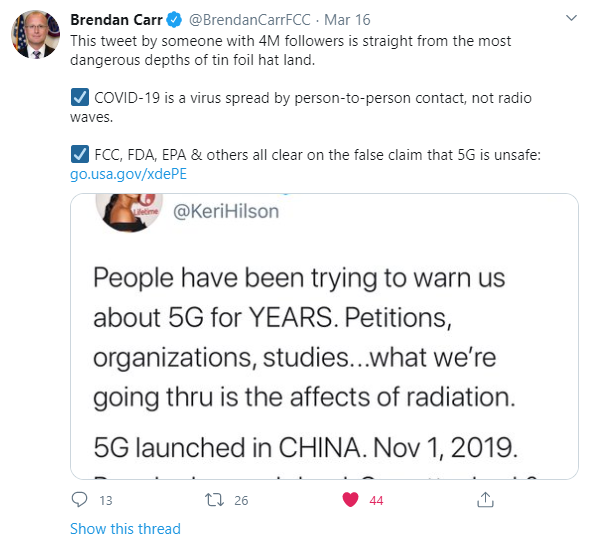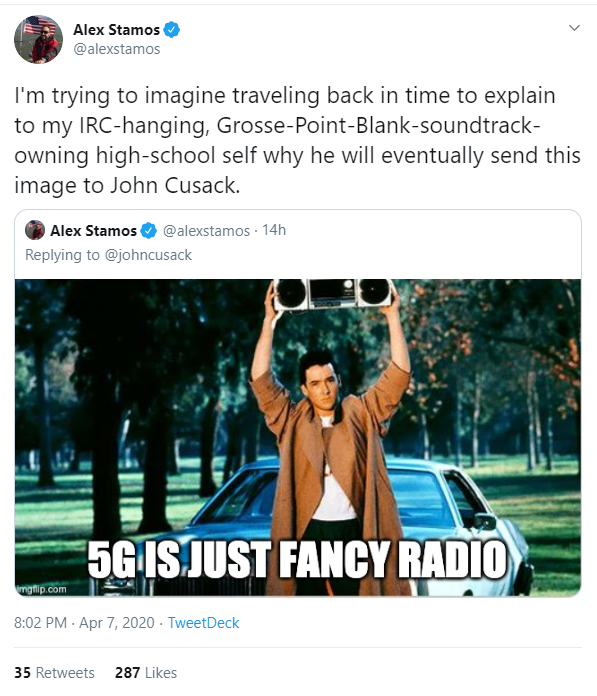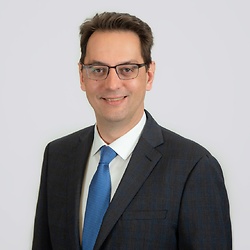You Can Say Anything Online—But 5G Conspiracy Theories Are Better Off Dead
One of the stranger consequences of the novel coronavirus (COVID-19) pandemic is the rise of fringe conspiracy theories surrounding its spread—and of those, among the most bizarre is that the virus is somehow tied to deployment of 5G technology. Of course, it should go without saying that fifth generation wireless technologies have nothing whatsoever to do with viral infection, as the Federal Communications Commission (FCC) itself was forced to tweet this morning. Wireless transmission of radio waves cannot assemble a virus or transmit a virus, nor do wireless networks suppress the immune system. To call the 5G conspiracy theories scientifically unfounded is to vastly understate the complete incoherence and biological impossibility of these theories. As the BBC has reported, it is better just to call them “complete rubbish.” The more nuanced versions of these conspiracy theories—that governments are using the virus to mask health effects from 5G networks, or are exploiting the virus to deploy 5G for nefarious ends—are no more sensible, and fall into the same rubric as concerns about fluoridated water or precious bodily fluids—or vaccines.
That has not stopped these theories from being passed around the Internet, including by fairly high-profile celebrities like Woody Harrelson, John Cusack, and Keri Hilson. Each of these has prompted a round of criticisms and responses, like the below. But as Mark Twain is thought (ironically, apparently wrongly) to have said: “A lie can travel halfway around the world while the truth is still putting on its shoes.” The results have spilled over into the real world, with 5G towers being set on fire in England and Northern Ireland.


In this case, the truth is that 5G has real relevance to the COVID-19 pandemic, but in almost exactly the opposite way that conspiracy theorists would have you believe. The COVID outbreak has underscored the importance of broadband connectivity, and it is through the increasingly ubiquitous deployment of wireless and wireline broadband networks that many have been able to keep working, learning, and conducting commerce. For the most part, thanks to decades of telecommunications innovation and investment, the telecommunications networks and internet services have held up admirably well.
But the sudden rush to move as many services online as possible has also underlined that holes remain in the availability of broadband. Scholars and policymakers have noted that the “homework gap” presents an even more serious risk in an era of online learning; if students cannot access lesson plans and video classrooms, they risk falling behind, and simply don’t have an opportunity to catch up. Others have noted that in some particularly rural environments, access to broadband remains a challenge for everyone, a “digital divide” that only widens in importance as the world practices physical distancing to stop COVID-19.
Even before the coronavirus became the number one global headline, industry leaders and policy makers around the world recognized that 5G will offer a quantum leap in the kinds of services that can be offered online, and that migration to this latest wireless technology will play a critical role in closing these gaps in the availability of high-speed data service in regions around the country. But while 5G has become a widely-repeated buzzword, there is also widespread confusion about exactly what it means. “5G” is often used synonymously with a move to exploit “high band” (i.e., high frequency) spectrum, which the FCC has recently opened up for wireless use. The technology actually has broader applications than that. In fact, 5G or fifth generation wireless technology just refers to the next evolution in the way that wireless networks communicate between base stations and handsets. Each iteration of network technology has brought with it increases in speed, spectrum efficiency, and network capability, and 5G is no different in that regard.
Because “high band” spectrum allows unprecedented data transmission speeds, it will be an area where fifth generation network technologies make a big splash. Increasing coverage, capacity, and speed in more densely populated areas is one piece of the puzzle in ensuring widespread availability of broadband options to everyone—and ensuring that no one falls into a homework gap. But this “high band” spectrum also suffers from short propagation distances and requires the construction of more, smaller facilities closer to the customer. As a result, 5G will also be employed in “mid band” and “low band” spectrum to increase data speeds there, and help bring higher wireless broadband speed and capacity even to rural areas with lower population density—which will help close the rural digital divide.
5G conspiracy theories have the potential to threaten the rapid deployment of this critical technology. Even if cell tower arson remains an isolated problem, frivolous concerns about health effects can pose a real barrier to local acceptance of new facility builds, and can lead to pointless delays in building the facilities necessary to upgrade and expand wireless networks. And while there’s no truth to the idea that governments are using the virus as cover to deploy 5G networks, commercial wireless networks, whether 4G or 5G, will likely play a critical role in helping countries around the world return to normal. The real danger isn’t 5G—it’s the unfounded online rumors that could derail its deployment.



